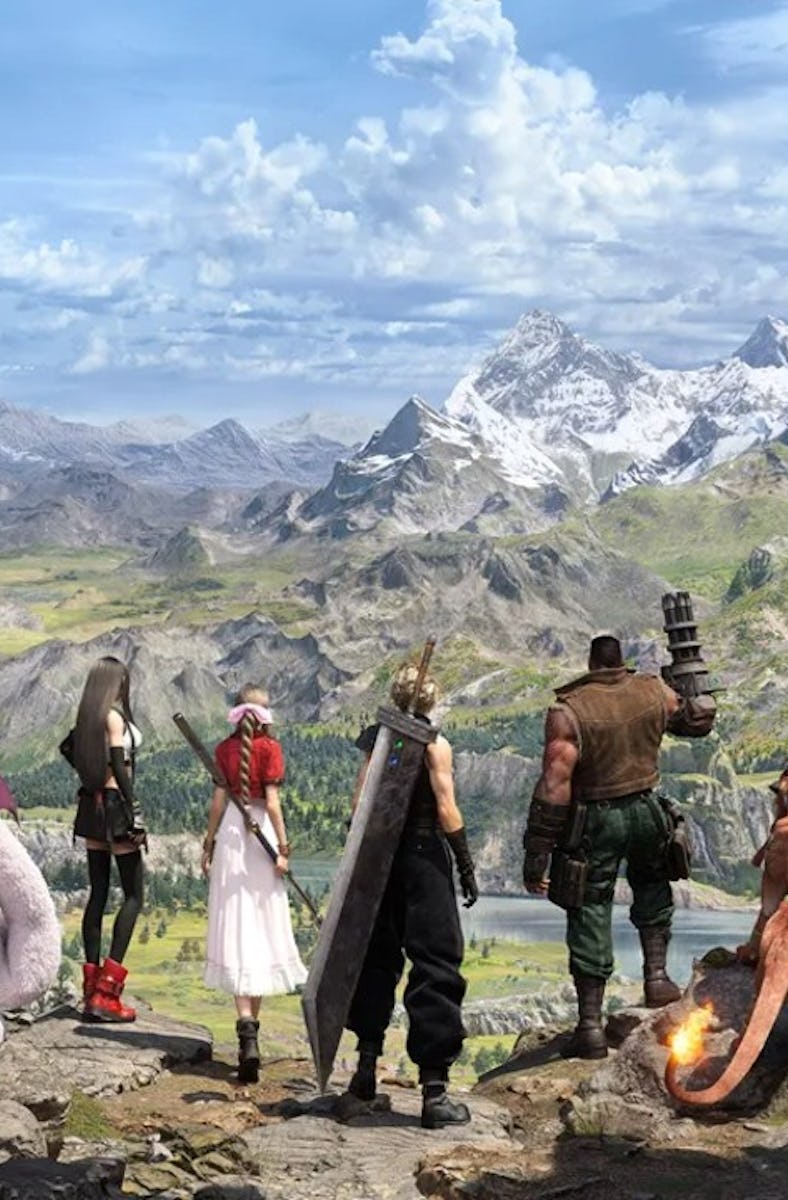Rebirth’s Open World Gets Right What Final Fantasy XV Got Wrong
A watershed moment.

Doing away with how linear Final Fantasy 7 Remake is, Rebirth casts players into an utterly massive world littered with countless side quests and distractions. Final Fantasy 7 Rebirth isn’t the franchise’s first open world game, but it’s the first one to get it right. Of course, Final Fantasy XV was the first to take a stab at it, but that entry stumbled in the execution of its open world, despite doing plenty of other things right. It’s abundantly clear that Square Enix has learned from that lesson, and it’s fascinating to compare the two and see how FFXV’s mistakes seemingly led to Rebirth’s successes.
FFXV was a major turning point for the franchise, and when it was released was the first new mainline entry for the franchise in seven years. It was unlike anything we’d seen from Final Fantasy, both for better and worse. There’s a lot that FFXV does right in terms of building its main character’s relationships, but it also feels wildly experimental, and oftentimes messy.
Final Fantasy XV’s open world looks gorgeous, but so much of it feels like empty space that’s just, there.
The core difference between FFXV and Rebirth comes down to one idea — size. An often overlooked aspect of open world games is the actual physical size of the world you explore, and how you uncover discoveries, side quests, content, and more along the way.
FFXV’s world is simply too big and filled with too much open space between everything interesting. The game goes for a “road trip” experience. While elements of that work well in the main story, in terms of exploration, it feels like there’s a lot of traveling and waiting.
Rebirth manages to fix that problem by making fantastic use of the actual space you’re exploring. The wisest decision was to split the game into regions, rather than one seamless open world. This allows Rebirth to have tightly designed and focused areas, each of which feels visually and thematically diverse. These areas manage to thread the needle between feeling expansive, but not overwhelmingly large.
Rebirth does a fantastic job of thematically making its world feel huge, but making the physical space you explore just the right size.
At the same time, Rebirth makes sure that you aren’t spending copious amounts of time traveling to objectives and also places discoveries along your way to create engaging content. Following the main story often takes you past side activities like optional battles, or caches of treasure chests to find. You can’t walk more than one or two minutes without running into enemies to battle or secrets to find, but if you want to bypass all that, your speedy Chocobo lets you do just that. Rebirth is all about providing options and a sense of freedom for the player, and that’s vital. At no point do you have to engage with the game’s side content, but it’s always there if you want to.
The other major factor comes down to the intention behind that side content, and the way it enhances and fleshes out the world of Final Fantasy 7. In comparison, XV’s 2016 world feels wholly disconnected from the story, almost like a separate game. Seldom do you get a sense of how people live or interact with the environment around them.
That’s a key point that the development team of Rebirth clearly wanted to address, as side content often ties directly into the main story, character relationships, or aspects of the world. Hunting down hidden treasure caches often leads to little bits of dialogue, like Cloud remarking on an old Shinra tank used in the battle against the Republic of Junon. Similarly, hunting down Lifestream Springs unlocks lore entries that teach you about the surrounding area.
Rebirth makes sure that its maps are filled with discoveries and varied experiences, making sure you’re not spending too long simply running around.
You get a sense of how each town and settlement has molded the environment around them, from The Gold Saucer sucking the life out of the surrounding desert to the way Costa Del Sol has a whole zipline system in place for tourists.
Then there are the side quests, which often end up connecting back to the main story or major characters in surprising ways. One quest holds some vital details on Tifa and Barret’s relationship with the other Avalanche members, while another reveals what happened to Chocobo Billy’s parents. Oftentimes these side quests also unlock new mini-games and other diversions, giving you even more to engage with. The sheer variety on display in Rebirth is staggering, which helps the game not feel like one of those “checklist” open world experiences, even if it does have real in-game checklists.
The two game’s formulas feel remarkably similar, but Rebirth takes liberal steps to make its world feel alive and exciting, with something new hiding around every corner. The irony is that Rebirth likely wouldn’t exist in its current state without FFXV taking those first steps, cutting its teeth on open world design. There are remarkable similarities between the two, but more than anything it’ll be interesting to see how Final Fantasy can continue to build on its open world ideas. It feels like Rebirth has opened the door for the franchise, and now future expectations will be higher than ever.